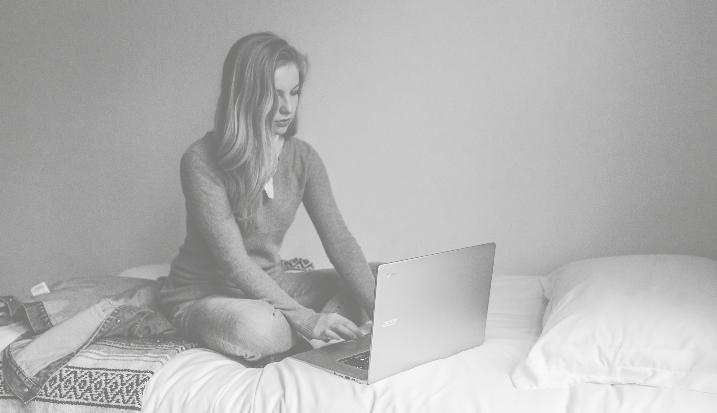
16 minute read
12 months on: how has COVID-19 changed PR
The past year has changed PR extensively. The question now is which changes will stick going forward?
BY JONATHAN OWEN
Advertisement
12 months ago, the pandemic which has wreaked havoc across the globe was in its infancy.
On 9 March last year, in a statement issued after a meeting of the government’s COBRA committee, Boris Johnson’s main advice was very much ‘Keep Calm and Carry On’ in tone At that point, four people in the UK had died from COVID- 19 and the prime minister’s mantra was telling people to wash their hands.
Just two weeks later, the mood had not so much shifted as somersaulted, as a grave-faced Johnson told the British public that daily life as they knew it would cease – with the nation plunged into lockdown. The rest, as they say, is history.
By the middle of January this year, more than 100,000 people in the UK had died from COVID-19, and confirmed cases had exceeded 3 million. This human toll has been accompanied by a socioeconomic cost that has yet to be fully realised.
The COVID-19 pandemic has elevated comms to unprecedented levels of importance – and scrutiny – with the recognition of the need for clear communication during a time of crisis.
When it comes to the key pillars of PR teams, there have been changes so profound that the way in which work is done has been changed beyond recognition – characterised by a digital remote workplace replacing the traditional office.
Here we look at what has changed over the past year in terms of creativity, talent development, recruitment, diversity, home vs office working, and the new ways of working that are likely to remain long after lockdown is over.
Creativity
One of the biggest problems of the past year has been how to sustain the creative process in a period where people have been living and working in isolation. Despite the rise of digital platforms to fill the gap, the creativity that results from people working and socialising together has suffered.
There have been various attempts to tackle the problem. Some teams have taken a more organised approach than they would have done before. Others have tried to maintain some degree of socially distanced working to bring people together.
Ben Caspersz, founder of Claremont Communications, says: “When it has been legally allowed to do so, we have been getting together, we’ve hired spaces for small groups to get together, and it has made all the difference.”
This human interaction has complemented digital tools such as Slack, which he describes as having been “absolutely key for everything” and whiteboard software packages such as Mural that help in “visually mapping things out.”
But tools can only go so far, according to Francis Ingham, director-general of the PRCA. “There is something definitely lost about the spontaneous creative moments that occur when you are in an office... it’s one of the driving forces pushing agency heads in wanting to go back to a face-to-face environment in a physical office.”
PAUL MACKENZIE-CUMMINS, MANAGING DIRECTOR, CLEARLY PR
For some agency bosses, the pandemic has prompted a rethink of how they approach creativity. Paul MackenzieCummins, managing director of Clearly PR, says: “A major development of the pandemic situation has been the need for organisations to make creativity an everyday habit for everyone in the business – fostering a culture of innovation whereby people feel empowered to be their most curious and inquisitive selves, every day.”
It’s a pragmatic point of view, based on “looking at how things are currently being done and continually asking if there is a better way of doing them. And being encouraged to try these things.”
Andrew Bloch, founder of Frank who is now an independent consultant, says that there are still ways people can get together whilst adhering to restrictions on movement and socialising. “I’ve been doing meetings on park benches, walking down the street, actually going out and seeing the real world.” In his view “it’s a bit too easy to fall into that habit of zoom becoming the default method of communication.”

BEWAKOOF / UNSPLASH
In some teams creativity has flourished despite, or perhaps because of, the unprecedented events of the past year. Sabrina Gomersall, head of client services at 90TEN, says: “I think we are more creative than before. Having some confines to work within can challenge you harder to think outside the box, but the payoff can be more rewarding and impressive.”
People don’t need to be in the same room to be creative, argues Stuart Lambert, founding partner at Blurred, and a former creative director at Weber Shandwick. “That process of spending some time to have your own thoughts, bouncing them off your creative partner, and building it iteratively, can actually be done very easily over email so in a weird way this COVID year might have demystified some of that and shown creativity doesn't suffer at all.”
Talent Development
The past year has denied those starting their careers the benefits of learning through osmosis and developing skills through working with colleagues. Unofficial learning on the job, a mainstay of PR, has largely disappeared. This is prompting mounting concern over the impact on a generation of new entrants into the profession who have had to go it alone during lockdown.
Gomersall sums up the problem: “It’s hard as junior team members aren’t able to learn as much by observing as we are working remotely.” This means that extra time and effort is needed, with feedback “more important than ever.”
The business of how to nurture people who are not in the same room as you is one of the top concerns that agencies and in-house departments have, according to Ingham.
“You can’t really prosper in a completely remote environment, and a big part of that is the talent development piece. You can put people on formal training, but what you’re missing is the gentle informal nudge of being next to somebody.”
Lambert admits to having concerns over the junior staff at his agency. “We’ve been really conscious about how this will have affected them without them even knowing it, in terms of lost opportunities to learn just by osmosis.”
SABRINA GOMERSALL, HEAD OF CLIENT SERVICES, 90TEN
That kind of informal learning on the job “cannot be replicated virtually so I do worry about junior talent and how much they will have lost, without knowing it.”
The issue has been one of the hardest things to deal with during the pandemic, and affects both senior and junior staff, says Jo-ann Robertson, chief executive at Ketchum. Although the agency has a learning and development programme, the “take up has definitely dropped because one of the things that we didn’t anticipate with people working from home is that things that used to take five minutes in the office now take about half an hour from home.”

ANDREW NEEL / UNSPLASH
Robertson adds that where before she would be able to quickly approve things during a walk through the office, now people schedule half an hour over a Zoom call. This means the time people have has “shrunk considerably.”
She says: “As we look at what some of the longer term changes may be, being able to support people to drive learning and development in a virtual world is one of the biggest challenges.”
Recruitment
Thousands of people have lost their jobs over the past year, due to cuts affecting both agency and in-house teams. One in five (19 per cent) PR practitioners have been furloughed or made redundant, according to the 2020 PRCA PR and Communications Census.
A glut of senior, over-qualified people has entered the job market, due to the combination of job losses and freelancers seeking more job security. In what is a buyers’ market, the competition for jobs is fierce.
The traditional route of clandestine coffee meetings and interviews has fallen away over the past year, with candidates having to sell themselves over Zoom rather than in person.
Rohan Shah, managing director, Reuben Sinclair, says that companies are set up now to recruit people remotely. “Clients still have a preference to meet candidates, there is still trepidation in the marketplace from hiring people without meeting them, so I think you’re going to have two camps – people who will insist on meetings and some people who will totally adapt to this new way of working.”
He says that recruitment has started to recover after initially dropping by 80 per cent during the first lockdown. “At the beginning the drop in recruitment was down to the pure uncertainty of everything and people just stopped hiring.”
ROHAN SHAH MANAGING DIRECTOR, REUBEN SINCLAIR
The problems of integrating new people into teams when everyone is working in isolation mean that more importance is being placed on how they are brought on board.
Mackenzie-Cummins says: “Greater attention will be afforded to how PR and Comms teams onboard new people. Virtual onboarding was a new thing for all of us, but being done so remotely meant that new starters missed out of the natural conversations that take place across the desk or coffee machine – those aspects that play an important part in forging staff relations and supporting their new colleagues with help and support.”
Having the right fit is increasingly important. Gomersall says: “For candidates who do come through to interview, culture more than ever seems to be a key decision factor, and learning how they can integrate even though their teams are remote.”
Remote working is no longer questioned in the way it once was, and a major spin-off of this is that recruiters can cast their net far wider. As Ingham puts it: “We now recruit talent regardless of where people work.” He predicts that there is going to be a major shift to having a lot more of the PR workforce based outside London, and that recruiting people on the basis of talent rather than geography is something that will stick.

Diversity
The pandemic has brought focus to staying afloat, with several agencies already having gone under in the past year and others facing an uncertain future once the furlough scheme comes to an end.
Fighting for financial survival was set to see diversity fall down the list of priorities – until the Black Lives Matter movement which erupted last year in the wake of the murder of George Floyd by police in Minneapolis.
This has “turbo charged” the move towards greater diversity, according to Fenella Grey, chair of Porter Novelli. “It’s now just about delivering with actions as opposed to just talk,” she says. “And it’s hard, there’s a fear factor of getting it wrong.” Remote working complicates things, she adds. “If you’re recruiting from more diverse backgrounds, then more support and nurturing and inclusivity is required, and that’s sometimes difficult if you’re not sitting next to the person all the time.”
Some agencies, such as Launch, freely admit that diversity has had to take a back seat during the pandemic.
Juliet Cameron, the agency’s chief operating launcher admits: “We have all had to make tough decisions this year, we have all had to prioritise and focus on getting the business in a good shape and keeping it there.” When it comes to diversity, “we haven’t had the bandwidth to focus on it in the way that I personally would, was before and certainly will do again.”
PR hasn’t covered itself in glory in tackling diversity – more than nine in ten in the industry are white, according to CIPR’s latest state of the profession report.
FENELLA GREY CHAIR, PORTER NOVELLI
Robertson is frustrated by “a lot of jumping on the bandwagon, so people talking about diversity, saying it is a priority with no real evidence of progress.” She adds: “When I joined the industry 19 years ago there was lots of talk about diversifying the workforce and 19 years later we’ve made almost no progress.”
The BLM movement has “prompted a rethink among agencies as to how diverse and inclusive they really are as an employer versus how much they think they are,” according to MackenzieCummins.
There has been a noticeable rise in clients requesting diverse shortlists, and help with diversity policies, in the wake of BLM, according to Shah. But he says: “There’s a risk of tokenism across some agencies, whereby they might request a shortlist of diverse candidates, but how much deeper does that go? Are they providing a fair and just recruitment process to allow those diverse candidates to be accepted into a role?”
Others warn that the economic situation has seen some people hand out work and opportunities to old friends and contacts rather than investing in new blood from diverse backgrounds.
Darryl Sparey, co-founder of Hard Numbers, says: “My worry for the diversity agenda is because it’s harder to meet new people and get out there and all the rest of it, because times are tough, people will revert to hiring the people that they know and that is doing nothing to improve diversity in our sector.”

ALLGO / UNSPLASH
Home vs Office Working
The biggest change over the past year has been the enforced explosion in home working – something that has been talked about for decades yet was achieved almost overnight through necessity.
With offices out of bounds for most of the past year, homes have become the new workplaces: great news for those living in large houses with space for a home office, but a very different proposition for those without the luxury of a spare room to work from.
And the obvious savings made through not having to travel to work, with the costs that entails, are countered by concerns over the mental wellbeing of people working in isolation for months on end.
For all the pros and cons, the genie is out of the bottle in terms of people being able to work from home. There is no longer a debate over whether it can work, as the past year has proven. The big question going forward is how much of this will be a temporary state of affairs and whether the traditional office is really a thing of the past, or merely having a hiatus.
One thing is certain, there is no one size fits all solution and flexibility will continue to be the order of the day.
Many PR firms are looking at having a mix of home and office working in the long term. One example is Weber Shandwick, which recently announced a flexible working policy based on working three days in the office and two days remotely.
PAUL MACKENZIE-CUMMINS, MANAGING DIRECTOR, CLEARLY PR
Ingham says: “We are not going back to the way we were.” He thinks a three-day week in the office will become the norm.
This view is echoed by Bloch, who says: “The future undoubtedly will move towards being more of a hybrid model.”
Robertson comments. “We have had smart working for three and a half years, we don't have core hours, people don't have to be in the office, the rules are that as long as you put your team and your clients at the heart of the decisions you make, we don't care where or when you work.”
Some of the rhetoric around the end of the office has been “overblown”, comments Lambert. He thinks that after normality resumes, within a couple of years “this will be a distant memory and I think old routines will creep back in.” Lambert adds: “The idea that the office is dead is for the birds, there will still be offices. What I think has changed forever is the idea of flexibility.”
However, not everyone is ready to consign the traditional office to the dustbin of history just yet.
Mackenzie-Cummins says: “I’ve always been against the idea of working from home. I was a freelancer for seven years and I worked from home, and there were times when it was very difficult. And in an office environment there is a way of working that you can’t get when you are working virtually.”
He adds: “For our business we’ll be looking at maybe two days a month, maybe three days a month that people can work from home tops. But that’s it because it’s very hard to maintain a company culture when it’s all remote, I think people bounce and feed off each other, and people enjoy meeting up with their colleagues because their colleagues are friends as well, and it’s important to have that physical environment for people to connect more effectively.”

LAURA DAVIDSON / UNSPLASH
Ingham says: “We are not going back to the way we were.” He thinks a three-day week in the office will become the norm. This view is echoed by Bloch, who says: “The future undoubtedly will move towards being more of a hybrid model.”
Paul Mackenzie-Cummins' predictions for PR in 2021...
1. BRAND PURPOSE WILL DOMINATE MARKETING AND COMMS THINKING
Brands and businesses are increasingly being judged by consumers on what they say and do, and how they behave. Central to this will be a degree of expectation on brands and businesses to show how committed they are to environmental and social responsibility causes. This commitment will need to be authentic – any attempt to ‘brandwash’ will backfire.
2. CONTENT MARKETING WILL LIKELY TAKE CENTRE STAGE
The pandemic showed us that consumer purchasing decisions are no longer influenced by the hyperbole that a brand or business propagates. Rather, the need to show they know their arses from their elbows, instead of telling the world what they think their market wants to hear, will be crucial to improving revenues.
3. DATA WILL PLAY A MAJOR PART IN EACH CAMPAIGN
'Fluffy’ PR in its traditional sense is on the way out, and will be replaced by the increased use of metrics to determine tangible results.
4. INFLUENCER MARKETING WILL FILTER INTO THE B2B SPACE
Synonymous with consumer comms, corporates have their key figures too, and savvy PR and comms firms will look to adapt the influencer marketing approach and apply it in the B2B world.









